
Related
Guests
- Mayo Bartlettattorney for family of Kenneth Chamberlain Sr. He is the former chief of the Bias Crimes Unit of the Westchester County District Attorney’s Office and the former chair of the Westchester County Human Rights Commission.
Mayo Bartlett, attorney for family of Kenneth Chamberlain Sr., reacts to the grand jury announcement that none of the White Plains police officers will be charged for shooting dead his client after they were called to his house when he mistakenly set off his LifeAid medical alert pendant. Bartlett is the former chief of the Bias Crimes Unit of the Westchester County District Attorney’s Office and the former chair of the Westchester County Human Rights Commission. [includes rush transcript]
Transcript
AMY GOODMAN: We’re joined on the phone right now by Kenneth Chamberlain Jr., the son of Kenneth Chamberlain Sr., the African-American former Marine who was shot dead by police in his home on November 19th, 2011, when his LifeAid medical alert pendant went off and the LifeAid company called police for medical assistance at his home.
Kenneth Chamberlain, the grand jury has just come back. There will be no charges against police officers involved in the killing of your father. Your response?
Kenneth Chamberlain, can you hear us? Ken—ah, it looks like he’s in a TV studio, and he’s not able to hear us right now, problems with the sound. So we’re going to go to Mayo Bartlett, the attorney for the Chamberlain family, for Kenneth Chamberlain Jr. Your response to the grand jury decision not to indict the police officers?
MAYO BARTLETT: Well, from the very beginning, we were interested in getting an independent arbiter with respect to this, because we know that grand juries are secret in New York, so you can basically present the same information any number of different ways. We don’t know what charges were actually presented. We don’t know who the target was. And it appears to me that the grand jury was more of an investigative grand jury that would give you a report than it was one that targeted actual suspects. And one of the things about that presentation is that if the district attorney’s office had a good-faith belief that one or more of these officers were guilty of a crime, they could have simply charged them by misdemeanor information or by felony complaint, and then, afterwards, presented the matter to the grand jury, which would be the norm for anyone else who’s arrested. Instead, the grand jury is often used to cover politically for a figure, for a district attorney. So if the grand jury indicts, it’s not the district attorney’s fault. They simply presented the evidence, and the grand jury indicted. If the grand jury chooses not to indict, well, then the grand jury essentially is blamed, but that’s an anonymous group of 23 individuals.
JUAN GONZÁLEZ: Well, Mayo Bartlett, I especially would like to ask you about this whole issue how this—the law enforcement handled this investigation, because there have been many cases in the past where, in high-profile cases, the grand jury not only does a—reviews the evidence, but actually issues a report. It happened, for instance, in the Tawana Brawley case many years ago. It happened in the killing of Kevin Cedeno when Manhattan District Attorney Morgenthau issued a complete report. But in this case, what happened was the district attorney only announced the finding of the grand jury not to indict. And then, within moments, the Westchester Police Department released, to me, an unprecedented amount of its internal documents to the press, so the DA did not have to comment on anything, and the department then sought to do the damage control, basically, to justify what the grand jury had decided. Have you ever seen this enormous release of internal records of the police department and of these tapes so quickly after a grand jury concludes its deliberations?
MAYO BARTLETT: I have absolutely never seen that. And I believe very strongly that if this information had been released earlier, we may have had an indictment, because the grand jury would have been in a position to ask different questions. We don’t know whether they heard all of these tapes, whether they heard them in context. If you hear things out of context, for instance, you may be given the impression that Mr. Chamberlain is making threats early on and that Mr. Chamberlain is unstable early on. But when you have the complete tapes, you know that he’s telling them repeatedly, for at least 15 minutes, that he’s fine, he’s OK, and he doesn’t need help. So one of the problems is the fact that all of this information is released, but I think it’s released in a very self-serving manner.
And generally, you would expect a grand jury to take direction from the prosecution. So, quite often in criminal cases, we get grand jury minutes when a witness is about to testify. And when you read those grand jury minutes, you see that the grand jurors themselves are actually asking questions, and quite often the district attorney determines that those questions are not relevant, especially when those questions go toward credibility or go toward the strength of the case. So they never really get to fully explore the case.
AMY GOODMAN: I want to go to another part of the LifeAid recording that we haven’t played. Now, just let me explain why there are these recordings. This is the LifeAid medical system where the patient, Kenneth Chamberlain, had a weak heart, wears this LifeAid pendant. We actually saw it on the video when you could see through the crack in the door. He had something around his neck. So, it’s not clear how it was triggered, the LifeAid pendant. Maybe when he was sleeping he rolled over. It was 5:00 in the morning. That alerted the LifeAid company. They have a system to record in the apartment of the patient. And that’s why we have this audio recording that was released by the police. So this recording is recording not only what’s happening in the room, and you hear those discussions between Kenneth Chamberlain’s sister and the LifeAid operator. So this is a part of the recording that we have not played. You can hear a police officer banging on Kenneth Chamberlain’s—banging on Kenneth Chamberlain’s window after Chamberlain said he’s OK. The officer responds by using a curse and the N-word. Listen closely.
OFFICER STEPHEN HART: Mr. Chamberlain!
KENNETH CHAMBERLAIN SR.: Don’t do that, sir. Don’t do that. Don’t do that, officer. Don’t do that. Don’t do that. Don’t do that. Do not do that! I’m telling you I’m OK!
OFFICER STEPHEN HART: Open up the damn door, nigger!
KENNETH CHAMBERLAIN SR.: I’m telling you I’m OK!
OFFICER STEPHEN HART: [inaudible]
KENNETH CHAMBERLAIN SR.: I’m telling you I’m OK.
AMY GOODMAN: And I want to replay just a bit of that, if you missed what the police officer was saying outside the window the first time.
OFFICER STEPHEN HART: Open up the damn door, nigger!
AMY GOODMAN: Mayo Bartlett, explain.
MAYO BARTLETT: Well, it’s inexplicable, because just that alone, you would think that if a district attorney’s office is presenting this case fully, that means more than just presenting a charge of murder in the second degree for a grand jury to consider. We don’t know what they presented or with respect to whom. But if you only present murder in the second degree, you’re asking a jury to find that the officers arrived at Mr. Chamberlain’s house with the sole intent of killing [him] and that they formed an intent to actually deprive him of his life. And that’s—that’s a difficult thing to ask that jury to find when they were responding to a medical call. But if you give them the full gamut of charges, you allow them to consider reckless conduct, reckless endangerment, criminally negligent homicide, manslaughter, official misconduct. And I would think that simply that language right there, cursing at Mr. Chamberlain, taunting him—
AMY GOODMAN: And saying what exactly?
MAYO BARTLETT: And saying, quote-unquote—
AMY GOODMAN: But don’t say the words.
MAYO BARTLETT: “I don’t give an F,” and then using the N-word, is unbecoming and unprofessional. And the entire course of conduct leaves so much to desired, that it’s a breach of their actual protocol.
JUAN GONZÁLEZ: Yeah, Mayo, that—the officer who uttered those words, the district attorney’s office has confirmed that those words were said and that that’s being—the police department is looking into the actions of that officer. But that officer was identified in the minutes of the—in the transcript of that recording as a Police Officer Stephen Hart.
What I noted in my column in the Daily News today was that there were at least three officers at the scene that night who were, at that very moment, facing a civil—federal civil rights claims against them in federal court by citizens who had claimed they had abused them.
There was Carelli himself, who actually shot Mr. Chamberlain, who’s facing a—still about to go to trial in a civil federal lawsuit of civil rights violations against two Jordanian immigrant brothers who alleged that he beat them while arresting them in a precinct and called them “ragheads.”
There is Stephen Hart himself, who was at the window and used the N-word, who is also facing claims by an African-American woman that he used a—
AMY GOODMAN: Hart, as you write—
JUAN GONZÁLEZ: I’m sorry.
AMY GOODMAN: —was caught on tape, “facing his own civil suit in federal court from a young Hispanic man.”
JUAN GONZÁLEZ: Hispanic man, right. The vice president of a—
AMY GOODMAN: Edgar Maurado.
JUAN GONZÁLEZ: The vice president of a bank, who claimed that he threw him to the pavement, beat his head on the pavement, broke his nose, while arresting him for disorderly conduct.
And then, finally, Sergeant Fottrell, one of the supervisors on the scene, who is facing a—who just finished a trial from an African-American woman who claimed that he used a stun gun on her while arresting her, although he was acquitted in that trial.
Three of them were facing, at that very moment that they were in Chamberlain’s house, charges by citizens who claimed that they had abused them. So, this is part of what you’re looking at in terms of calling for a federal investigation of the White Plains Police Department?
MAYO BARTLETT: Absolutely. We know that people are not going to be perfect. We know that the officers won’t be. But when the officers exhibit this type of behavior, the department has the responsibility of overseeing them and determining whether they’re still fit to serve as police officers, and if so, in what capacity. And it’s clear that the White Plains Police Department and the city of White Plains as a whole turns a blind eye to these things. And if these officers engaged in this same conduct without being able to hide behind a badge and a shield, they would be charged with felonies, serious felonies. They would very well be in jail.
JUAN GONZÁLEZ: I’d also like to ask you about the issue of—because the police have claimed that Mr. Chamberlain advanced on them twice with knives—once inside the apartment and once as they were trying to break down the door. Now, the video of the police attempts to break down the door are really chilling, because you don’t really get a sense of the fear that that can put in you, because they were—they were using crowbars. There were using axes. There was an ax visible, a police ax, as they were attempting to break down his door. But there was a claim that Chamberlain had tried to use—initially it was reported as an ax, put through the door, that the police grabbed away from him. Then it was later downgraded, because—and I know by discussions with the district attorney’s office—they said it was a meat cleaver, not an ax. And now it turns out that in the reports of the police officers on the scene, it was an eight-inch butter knife that went through—that he tried to put through the door and was taken away from him. In fact, you hear the police officers say, “We got the knife away from him,” before they even entered the apartment. Now, there is an issue of what happened inside the apartment, whether there was a second knife that he attempted to use against them. Your response to this claim of the weapons?
MAYO BARTLETT: The police can make anything a weapon. If they came in here right now, they could take this mug I have in front of me and say it’s a weapon, because I could use it as a dangerous instrument. But the police took, I guess, what they claim is a butter knife without incident. And what’s important to remember here is that that occurred fairly well into this entire episode. Mr. Chamberlain was in his home 5:00 in the morning, and he had advised police and LifeAid numerous times, over a 15- to 20-minute period, that he was OK and didn’t need assistance.
The police department’s own protocol requires them to call people when they go on a medical emergency to make sure that they can establish contact with the person that way. And if they can in fact do that, it can end even there, if they’re satisfied that that’s the person. Now, they claim that they knew Mr. Chamberlain, so they knew who they were going to speak to, and they knew who they were speaking with. And he said he was fine. LifeAid actually asks to withdraw and recall their call for assistance. And once the door is taken down and the police are advancing into Mr. Chamberlain’s home, the video shows that Mr. Chamberlain standing, not advancing toward the police. And it’s important to note that at no point in time is it even alleged that Mr. Chamberlain ever left his house to confront anybody.
AMY GOODMAN: On the audiotapes from the LifeAid company released yesterday, you can hear attempts by the LifeAid dispatcher and Kenneth Chamberlain’s sister, Carol, trying to defuse the situation. At one point, Kenneth’s sister Carol wants to call her brother to see if she can help him calm down. So the LifeAid dispatcher calls the police to relay this idea to them.
OFFICER CIANCI: Yeah, White Plains Police. This is 64.
LIFEAID OPERATOR: Yes, Operator 64. This is Operator JR01. I not too long ago spoke to you.
OFFICER CIANCI: Yeah, what’s going on?
LIFEAID OPERATOR: OK, I gave Carol—well, she actually gave us a call back. She would like to call Kenneth’s home, and she would like for you to tell the officers to tell him to answer his phone.
OFFICER CIANCI: Ma’am, we’ve got a—we’ve got a pretty serious situation going on over here, OK?
LIFEAID OPERATOR: That’s what I told her.
OFFICER CIANCI: So, tell her to relax. We’re trying to work it out on our end. But right now we’re not going to play mediator or anything between the two of them. OK? We can’t play those games right now. We’ve got a serious situation going on, and we’re trying to figure it out. We’re trying to get a resolution going. So just—
LIFEAID OPERATOR: No, I understand completely.
OFFICER CIANCI: We want to do our best. I know it’s not your fault. You’re just relaying her message. But right now, you know, we don’t need to relay her messages to us at this point. Just tell her that we’re trying to resolve the situation the best we can. OK?
LIFEAID OPERATOR: OK, I’ll let her know that.
OFFICER CIANCI: So, thank you very much.
AMY GOODMAN: That is Kenneth Chamberlain’s sister—the LifeAid operator, rather, talking to the police. Mayo Bartlett?
MAYO BARTLETT: Well, when you have family members that can assist in situations like this, it’s negligent, at a minimum, to ignore those individuals and not to let them try to help out. I mean, that would have possibly defused the entire situation.


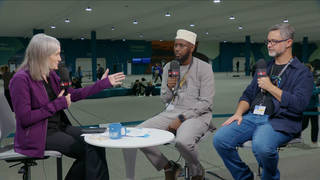
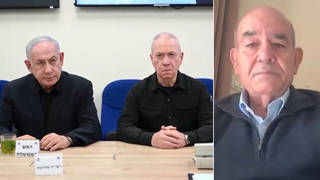
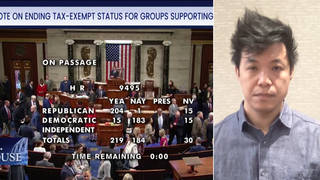
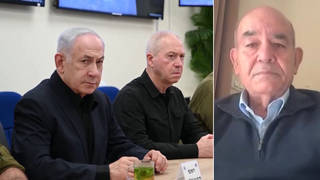




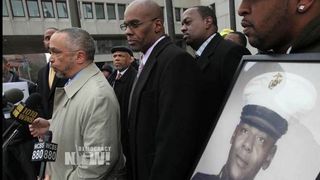

Media Options